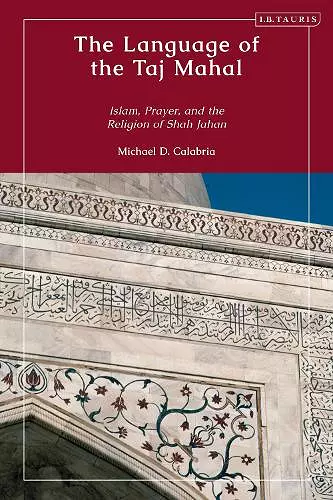The Language of the Taj Mahal
Islam, Prayer, and the Religion of Shah Jahan
Format:Paperback
Publisher:Bloomsbury Publishing PLC
Published:18th May '23
Currently unavailable, and unfortunately no date known when it will be back

By examining the inscriptions and architecture of the Taj Mahal, this book presents the building in terms of its religious, social and political significance
The Taj Mahal, built by the Mughal emperor Shah Jahan (1592-1666 CE) as a mausoleum for his wife Mumtaz Mahal (1593-1631 CE), is considered exceptional in the history of world architecture.This book provides a deeper understanding of the Taj Mahal and its builder by examining its inscriptions within their architectural, historical and biographical contexts. The texts adorning the Taj Mahal comprise verses from twenty-two different chapters of the Qur’an but their meaning and significance escapes most non-Muslim visitors or those unable to read them. This book will be the first dedicated solely to the inscriptions in the monument, providing translations, commentary and interpretation of the texts. As well as offering a unique approach to the study of the building, the book uses the inscriptions to expound the foundational elements of Islam, the faith of Shah Jahan and also what the Taj Mahal still means today.
"Michael Calabria’s The Language of the Taj Mahal is n important, unique and thoroughly engaging study of one of the Seven Wonders of the World attracts millions of Muslims and tourists every year. As its subtitle: Islam, Prayer and the Religion of Shah Jahan, indicates, while The Taj Mahal addresses the historical context, art and architecture of the Taj Mahal, its new and primary focus on its religious significance. Calabria masterfully investigates and explains how the personal faith and piety of Shah Jahan influenced its design and construction and how the extensive use of Qur’anic inscriptions reflect basic and core belief and teachings of the Quran and Islam in seventeenth century South Asia." * John L. Esposito, Professor of Islamic Studies, Georgetown University, USA *
Michael Calabria’s The Language of the Taj Mahal is an invaluable contribution to the field of Islamic studies and to religious studies broadly. It offers a unique lens for studying expressions of Muslim faith and spirituality drawing on, as it does, a variety of disciplinary perspectives including art and architecture, history, and theology.
Calabria sees the Taj not just as a “work of architecture but as text” (xii) which allows him to “read” the monument, thus discovering and then, based on meticulous research, explaining the significance of the mausoleum as a whole, as well as of the specific Qur’anic verses inscribed throughout the building complex. An important feature of this work is how it makes the key figures associated with the Taj come alive and facilitate our understanding of the time and place in which they lived.
In effect, Calabria engages in dialogue with the Taj. Even as he illustrates some of its visible (architectural, historical…) treasures, its hidden (spiritual, cultural…) gems become manifest in the process (and vice-versa), revealing the importance of considering the wider humanities context in religious studies.
"In this meticulous work, Michael Calabria unveils the spiritual dimension of the Taj Mahal by reading the monument as a 'holy text'. The author demonstrates that the Taj Mahal is not only a monument of love but also a spiritual testament of Emperor Shah Jahan, an elegant expression of his Islamic Faith that he approached sincerely but lived out imperfectly. The Taj Mahal emerges in the heart of the reader as a whirling dervish who swirls 'time' into moments of 'transcendence'. This remarkable book is an invitation to enter into spiritual conversation with Emperor Shah Jahan, his aide Amanat Khan and the Taj Mahal itself. I recommend the book for those who are interested in history, religions and mysticism."
* Joseph Victor Edwin, Vidyajyoti College of Theology, Delhi, India *ISBN: 9780755637898
Dimensions: unknown
Weight: unknown
288 pages